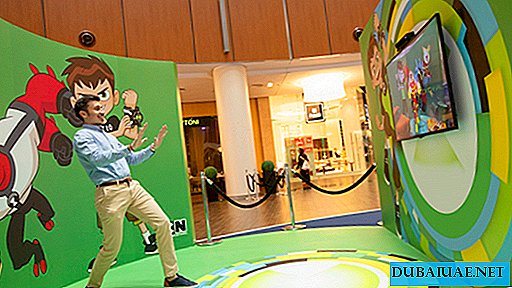 AT ALL TIMES, MEALS HAVE SERVED A PERSON NOT ONLY TO PASS YOUR HUNGER AND THirst. IN THE KITCHEN OF THOSE OR ANOTHER SOCIETY REFLECTED, AS IN A DROP OF WATER, HIS LIFE.
AT ALL TIMES, MEALS HAVE SERVED A PERSON NOT ONLY TO PASS YOUR HUNGER AND THirst. IN THE KITCHEN OF THOSE OR ANOTHER SOCIETY REFLECTED, AS IN A DROP OF WATER, HIS LIFE.
In the Middle East, a large family has always come together for a common meal. Food was traditionally served on shared dishes or on a single dish. Managed without cutlery and personal plates
National cuisine is living evidence of the development of the economy and economic structure. For example, the lack of meat in Arab countries was offset by the widespread use of legumes - the basis of the famous falafal or couscous dishes.
The meal always brought together a family, tribe, city and allowed people to distinguish their own team from others. The value of hospitality (diaf) is one of the main values for Arabs since pre-Islamic times.
On the other hand, the culinary traditions of all peoples, including the Arabian one, were subjected to mutual influences and enriched each other. Table customs are also part of a religion that has always been interested not only in “spiritual food”. Finally, any cuisine is a real mosaic of diverse regional traditions. The usual division of the Arab world is reflected in three types of culinary traditions: Maghreb, eastern (Syria, Lebanon, Jordan, Palestine), and Arabian. Emirate cuisine also belongs to the latter.
Of course, the peculiarities of nature and traditional food of one or another people are imprinted in the language. Just as an Eskimo has many words for snow, depending on its type, so the Arab has at least four terms to name a date. Green fruits are called "balls", unripe - "busr", ripe - "rutab", dry - "tamr". And this is not counting the regional dialects of Arabic and countless varieties of dates (for example, in the UAE grown varieties of "boomers", "dabbas", "farad") ... Under the palm tree, which in the Arab countries is called "reckless", is understood, first of all, as a fruitful date tree.
Spiritual and bodily food
No matter how great the regional diversity of Arabian cuisine, it is united by the canons of Islam. For the Emirates, where religion has a significant place, this is especially important. First of all, a Muslim should not eat forbidden foods - haram. All jurists include pork, blood, animals that were killed and killed by predators, as well as sacrificial animals that were touched by a non-Muslim.
Next begins the unsteady soil of theological disputes. Thus, the ban on alcohol is ambiguously formulated: they argue about whether it is possible to eat, for example, squirrel, wolf, elephant, hedgehog or magpie. In any case, a Muslim who has used haraam will be forgiven if he was forced to do it by people or hunger.
Islam gives many useful “tips” in the field of nutrition, which are favorably accepted by modern medicine. In the Qur'an, the healing properties of dates and mushrooms are mentioned, and the prophet Muhammad appreciated grapes and raisins, onions and garlic, quince and pomegranate, olive oil and honey.
Muslims are recommended moderation in food: this feature is very consistent with the food asceticism of the Arabian Arabs at the time of the birth of Islam. Arabs joined the refined cuisine of the Mediterranean and Iranian peoples after they conquered the corresponding lands. But the ancestors of modern emirates who did not leave Arabia, the desert did not pamper until the onset of the "oil boom". Even the pose in which the Muslim ate was aimed at speedy saturation: he sat on his knees, and sometimes he pressed one leg to his stomach.
Before eating and after eating, a Muslim must cleanse himself bodily - wash his hands and spiritually - say “basmal” (phrase “in the name of Allah the Merciful, the Merciful”). Dishes are taken only with the right hand. The Prophet Muhammad promoted the widespread use of the Miswaka (Sivak) toothpicks. It was a stick the length of a modern toothbrush made from arak wood, which contained substances useful for teeth.
Arabian Culinary Map
UAE traditional cuisine occupies a rather unusual place on the culinary map of the Arab world. She hardly gets much attention in standard books on Arabic cuisine, which mainly describe Lebanese, Egyptian, Iraqi or Maghreb dishes. The Emirate’s meal, of course, is characterized by many of the dishes and ingredients common to the entire Arab tradition: vegetables (especially legumes), meat (and its favorite form is lamb) and poultry (most often chicken) are widely used, fruits and sweets, coffee and flavored drinks, endless kinds of spices and characteristic bread cakes. However, throughout history, Emirate cuisine has been able to become a very original phenomenon.
 Its independent significance is proved by the appearance in recent years of several cookbooks containing local recipes. For example, back in 1994, Celia Ann Brock Al Ansari, an American woman who married an Emirate, published a two-page book in which she tried to combine traditional recipes gleaned from her husband’s surroundings. The tradition of writing food books in the Arab world goes back centuries and has never been considered a light-hearted hobby there. So, back in the 9th century (according to the Christian calendar), in the golden era of Islamic culture, this genre was in full bloom. Naturalists and historians, courtiers and even caliphs composed on this subject. For example, the great scholar-encyclopedist of the IXX centuries Abu Bakr Muhammad Al Razi wrote a lot about coffee, and even dedicated a separate book to the history of this Arabs-favorite drink. He was one of the first authors to leave a written mention of coffee. Emirates have never been the main gourmets of the Arab world, but meanwhile, at least three national symbols, which can be seen everywhere in the UAE today, are associated with food. The uniqueness of the Emirate cuisine is determined by several circumstances.
Its independent significance is proved by the appearance in recent years of several cookbooks containing local recipes. For example, back in 1994, Celia Ann Brock Al Ansari, an American woman who married an Emirate, published a two-page book in which she tried to combine traditional recipes gleaned from her husband’s surroundings. The tradition of writing food books in the Arab world goes back centuries and has never been considered a light-hearted hobby there. So, back in the 9th century (according to the Christian calendar), in the golden era of Islamic culture, this genre was in full bloom. Naturalists and historians, courtiers and even caliphs composed on this subject. For example, the great scholar-encyclopedist of the IXX centuries Abu Bakr Muhammad Al Razi wrote a lot about coffee, and even dedicated a separate book to the history of this Arabs-favorite drink. He was one of the first authors to leave a written mention of coffee. Emirates have never been the main gourmets of the Arab world, but meanwhile, at least three national symbols, which can be seen everywhere in the UAE today, are associated with food. The uniqueness of the Emirate cuisine is determined by several circumstances.
First of all, the severity and poverty of the desert to the Emirates more than compensated for the rich waters of the Persian Gulf. They include dorado, perch, tuna, mullet, mackerel, barracuda and some species of sharks, exotic sun fish and red snapper, shrimps of all sizes, crabs, squids, lobsters ... It is unlikely that in other regions of the Arab world you can find such widespread use of seafood in cooking.
Another interesting feature of the local culinary tradition was its early acquaintance and close contacts with great non-Arab cultures. These were, first of all, Iranian, Indian, Far Eastern cuisines, which the locals met before many Arabs and, of course, Europeans. The geographical position of the lands of the future UAE and their role in international trade played a role.
There are dishes that are usually prepared for Islamic holidays - Eid al Fitr (Feast of Conversation) and Eid al Adha (Feast of Sacrifice), as well as during the month of Ramadan. There are such traditions in the Emirates. Islam gives many useful “tips” in the field of nutrition, which are favorably accepted by modern medicine ...
Images of the Dalli coffee pot recall the generosity and hospitality of the Bedouins, the date palm - this invaluable source of food and building materials, fish - the main edible gift of the Persian Gulf
Until the middle of the 20th century, the Bedouins ate mainly camel milk and dates - the most environmentally friendly product in the UAE
It is important to note that meat has always been of great value to the local Bedouins, and camels, especially, were rarely eaten - this delicacy was prepared on the occasion of traditional holidays, and now mainly members of the emirate’s elite allow it
 The world of fishermen with their boats "checkers", the noise of fish markets, the rhythm of the ebbs and flows - an integral part of the local culture, preserved for us by sculptors, poets and writers
The world of fishermen with their boats "checkers", the noise of fish markets, the rhythm of the ebbs and flows - an integral part of the local culture, preserved for us by sculptors, poets and writers
Emirati’s popular dishes, such as “sambusa” (triangular fried pies with vegetable, fish or meat fillings) or “biryani” (fish or meat, which are cooked with seasoned rice), come from India. At the same time, the Emirates were able to give even the "imported" foods local flavor. This is done, for example, with the help of a unique mix of Bizar spices, which is especially popular in the emirates and is often done at home. So the Emirate’s cuisine met with the foreign one long before the “oil era”, mass immigration and the appearance in the UAE of hundreds of restaurants offering dishes from around the world. Nevertheless, no matter how abundant the sea was, trade contacts were widespread and the ancestors of the emirates were inventive, throughout the history of the harsh local conditions made themselves felt. Fresh water was a rarity in the desert - even the foundation of a settlement on the site of the future city of Abu Dhabi, the capital of the UAE, in the 1760s was explained by the fact that sources of brackish water were discovered there - jewels for unpretentious local tribes. Cattle were bred mainly for milk; poultry were not known. Cooking itself was faced with a problem: there was not enough fuel.
A wealth of emirate cuisine
Today, many Emirates, who have restaurants for every taste and budget, continue to choose local cuisine. The reasons are in the love of tradition, but also in the wonderful taste and usefulness of its dishes. What are the most characteristic of them? The dishes that are served for breakfast range from the simplest (scrambled eggs or an analogue of omelet with tomatoes) to very complex. For example, the balalit dish is made from vermicelli, omelet, red onion, and the addition of saffron, cardamom and a lot of sugar gives it a unique flavor. There is always a place for beans on the Arabic table: for breakfast they can cook "dango" (seasoned boiled chickpea grains). Of course, any meal is accompanied by various types of bread. The variety of baked goods in Arabic cuisine is striking. In the UAE, crayfish cakes are common, which are baked from regular dough from flour and water, sometimes with the addition of other ingredients.
Yeast bread (several varieties of "Hamir") is prepared with the addition of pasta paste in the "Tabi" oven, and it is especially popular in the month of Ramadan. You can also find analogues of pancakes. For example, “mahalla” (sometimes pancakes are baked with the addition of dates and cardamom) or “shabab”. Vegetable oil with sugar, cheese, honey is spread on bread, and ghee is especially appreciated.
Daytime and evening feasts are more abundant. Appetizers include the already mentioned “sambusa”, numerous seafood dishes (fried shrimp, squid or even fish roe with special seasonings) or classic Arabic hummus. Salads mainly consist of greens and vegetables (for example, watercress, onions, tomatoes), and sometimes they are prepared on the basis of salted fish "malih" - one of the "favorites" of the Emirate cuisine. Soups ("shurba") are quite popular - with chicken, seafood or lentils. The thick soup also reminds a dish called "saluna", consisting of cooked meat or fish with a variety of vegetables and seasonings. Among the main dishes are various types of fried fish (sometimes salted) or seafood, meat and chicken kebabs, biryani with meat, fish or seafood. The symbol of noble simplicity and at the same time the richness of taste is called "haris" - from meat and wheat grains. The mixture is cooked in boiling water until it turns into a homogeneous mass, and then the night languishes on coals in a clay pot. Haris is served in Ramadan, on major Islamic holidays and at weddings. Another popular dish is “makhbus” or “fauka dajaj” (literally, “chicken on top”, although fish can take its place on a “pillow” of rice). This dish is also prepared for a long time, so that the ingredients become tender, and seasoned with bizar and lumi (dried lemons, cut in half for flavor).
Emirates, like other Arabs, prefer sweet desserts - a variety of pastries with honey, nuts, dates, flavored water. Flour-based sweets with various seasonings and flavors are typical for the UAE - "habisa", "Lukayma", "Basis". Drink dishes with soft drinks. A special place in all Arabic cuisine is occupied by water, scented with rose petals, orange blossom, fruits or incense. They also rub their hands at the table with water. In the UAE, they like to serve mint tea, but the symbol of local cuisine and hospitality is coffee with cardamom.
Experts say that most of what is called Arabic cuisine in restaurants today is actually of Lebanese or Turkish origin, since it is precisely for these culinary traditions that there are a lot of snacks - mezze, consisting of tomatoes, onions and eggplant
FESTIVALS
Emirate cuisine is now experiencing a new heyday. Both indigenous people and visitors want to touch the local culinary tradition. The UAE, as always, is distinguished by cosmopolitanism.
Culinary art festivals are held in the country with the participation of world famous chefs, two large ones - Taste of Dubai and Gourmet Abu Dhabi. Since 2005, the International Culinary Arts Center has been operating in Dubai, which became part of the top ten similar institutions in the world.












